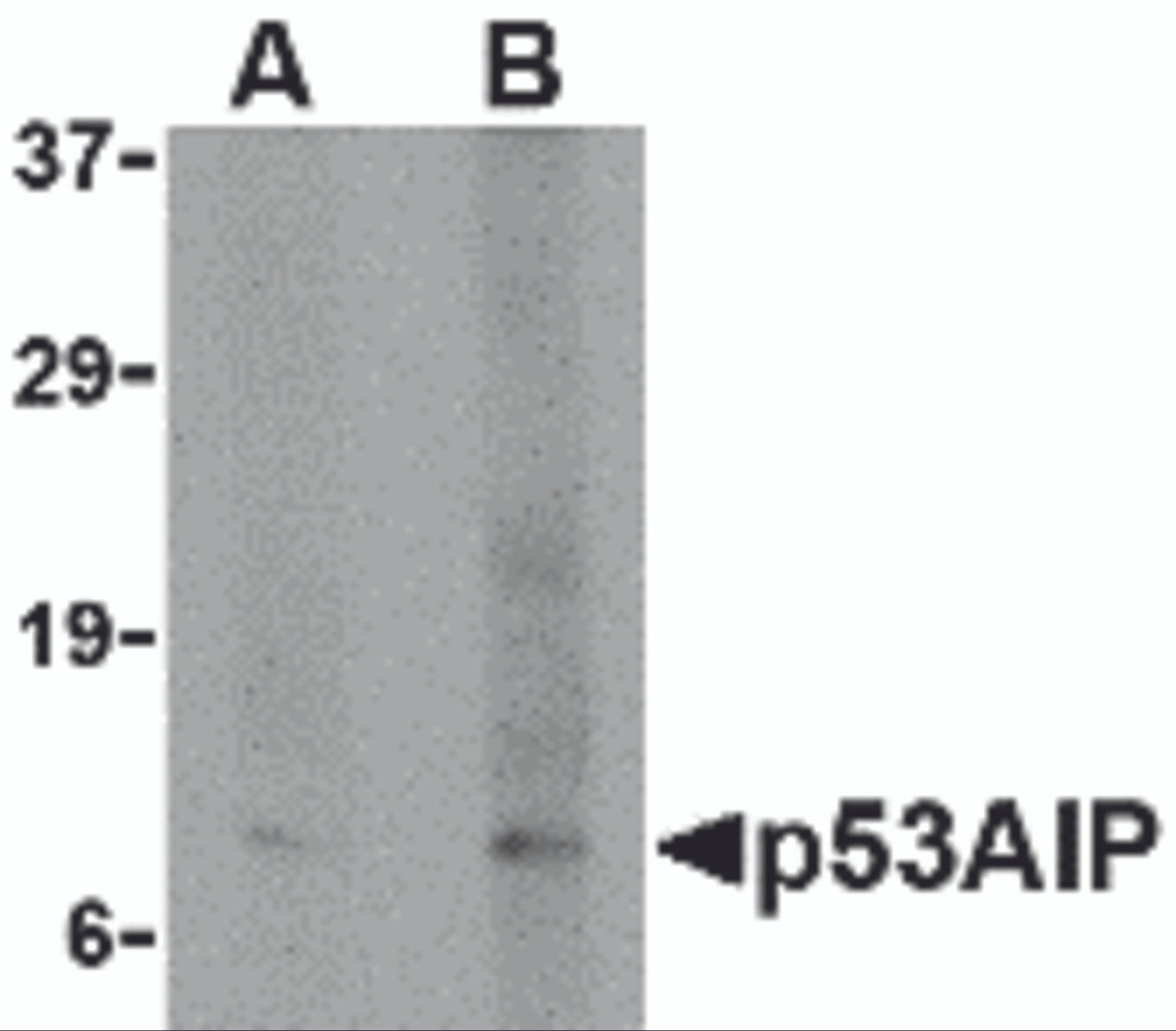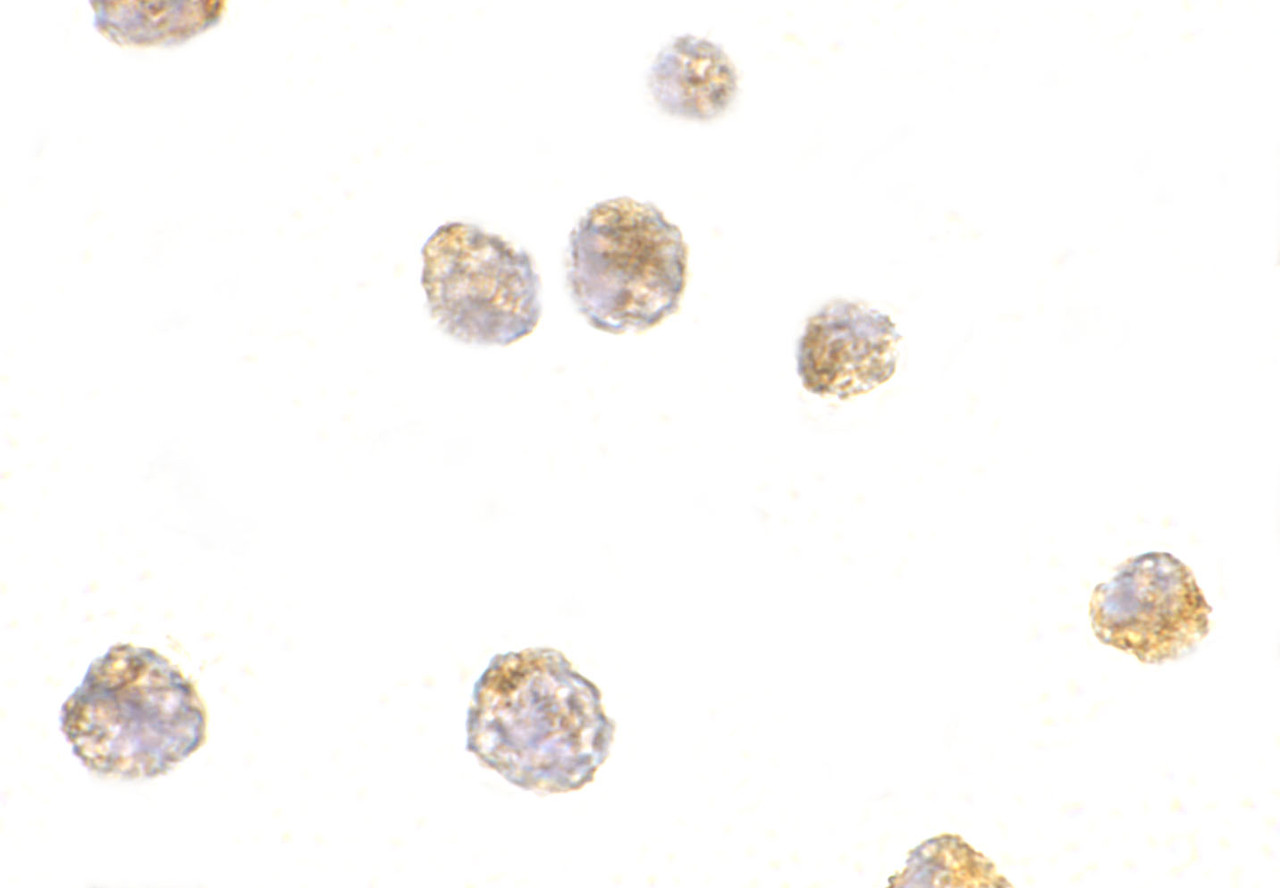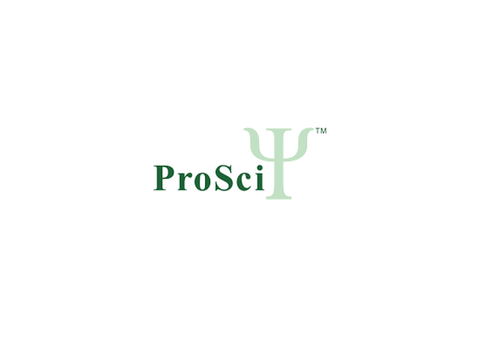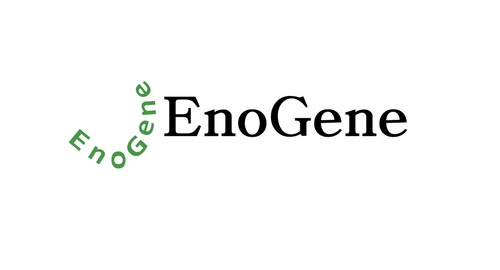Product Description
p53AIP1 Antibody | 2449 | ProSci
Host: Rabbit
Reactivity: Human
Homology: N/A
Immunogen: p53AIP1 antibody was raised against a 15 amino acid synthetic peptide from near the amino terminus of human p53AIP1.
The immunogen is located within the first 50 amino acids of p53AIP1.
Research Area: Apoptosis, Cancer
Tested Application: E, WB, ICC, IF
Application: p53AIP1 antibody can be used for detection of p53AIP1 by Western blot at 4 - 8 μg/mL. Antibody can also be used for immunocytochemistry starting at 10 μg/mL. For immunofluorescence start at 20 μg/mL.
Antibody validated: Western Blot in human samples; Immunocytochemistry in human samples and Immunofluorescence in human samples. All other applications and species not yet tested.
Specificiy: N/A
Positive Control 1: Cat. No. 1209 - HL60 Cell Lysate
Positive Control 2: Cat. No. 17-009 - HL-60 Cell Slide
Positive Control 3: N/A
Positive Control 4: N/A
Positive Control 5: N/A
Positive Control 6: N/A
Molecular Weight: N/A
Validation: N/A
Isoform: N/A
Purification: p53AIP1 Antibody is affinity chromatography purified via peptide column.
Clonality: Polyclonal
Clone: N/A
Isotype: IgG
Conjugate: Unconjugated
Physical State: Liquid
Buffer: p53AIP1 Antibody is supplied in PBS containing 0.02% sodium azide.
Concentration: 1 mg/ml
Storage Condition: p53AIP1 antibody can be stored at 4˚C for three months and -20˚C, stable for up to one year. As with all antibodies care should be taken to avoid repeated freeze thaw cycles. Antibodies should not be exposed to prolonged high temperatures.
Alternate Name: p53AIP1 Antibody: P53AIP1, p53-regulated apoptosis-inducing protein 1, p53AIP1
User Note: Optimal dilutions for each application to be determined by the researcher.
BACKGROUND: p53AIP1 Antibody: The p53 tumor-suppressor protein can induce apoptosis through transcriptional activation of several genes. One such protein p53AIP was initially identified through direct cloning of p53 binding sequences from human genomic DNA. Its expression is inducible by p53 following p53 phosphorylation on Ser-46, and ectopic expression of p53AIP leads to apoptotic cell death. Both the phosphorylation of p53 and the induction of p53AIP were blocked by inhibiting the expression of p53DINP1 by the introduction of antisense oligonucleotides to p53DINP1, suggesting that the apoptosis associated with p53AIP expression is regulated by p53DINP1. Finally, as adenovirus-mediated introduction of p53AIP has been shown to suppress tumor growth in vivo, it has been suggested that p53AIP gene transfer may become a useful strategy for the treatment of p53-resistant cancers. Three isoforms of p53AIP are known to exist; this antibody will detect all three.
 Euro
Euro
 USD
USD
 British Pound
British Pound
 NULL
NULL












